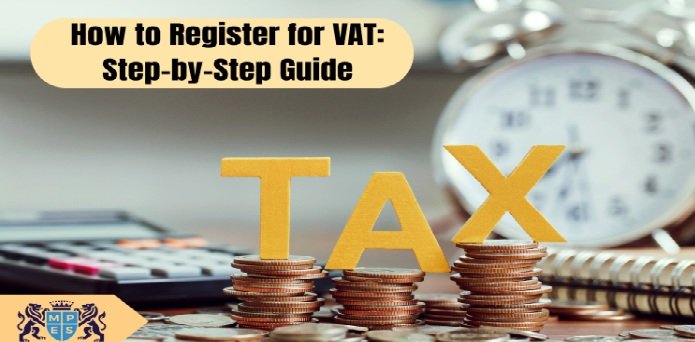Have you recently completed your ACA Professional Qualification and are considering starting your own business? Or maybe you’ve hit the income threshold and wondered, “Do I need to register for VAT now?” Understanding What is VAT Tax is one thing; registering for it is another. But here’s the good news: the process is more straightforward than you think. Whether you’re a freelancer, startup founder, or sole trader, this step-by-step blog will walk you through everything you need to know about registering Value-Added Tax or VAT in the UK without any confusion.
Table of Contents
- Do You Need to Register for VAT?
- What You Need Before You Register
- Step-by-Step VAT Registration Process
- What Happens After Registration?
- Conclusion
Do You Need to Register for VAT?
You must register for Value Added Tax or VAT if your taxable turnover exceeds the £90,000 threshold in the UK (as of 2025). You can voluntarily register even if you are below that threshold. Why? It enables you to recover VAT on expenses and gives your company more legitimacy. It’s more than simply a compliance task for independent contractors and small business owners; it’s a strategic decision.
What You Need Before You Register
Make sure you have a few necessities before you begin the process:
- Your Government Gateway user ID and password
- Business details (name, address, bank info)
- Details about your turnover, business activities, and accounting methods
- Your Unique Taxpayer Reference or UTR
If you have things ready, you won’t have to quit the application midway through.
Step-by-Step VAT Registration Process
Below are the essential steps to help you register for VAT smoothly and with confidence:
1. Log Into HMRC Online Services
Visit the official His Majesty’s Revenue & Customs or HMRC website to start the VAT registration process. You must use your Government Gateway user ID and password to log in. Don’t worry if you’ve never made one; it just takes a few minutes. After registering, this account will be your login for any upcoming interactions with HMRC, including filing VAT returns and reviewing communications. You’ll need your login credentials frequently, so use a secure email and keep them safe.
2. Go to the VAT Registration Section
Once logged in, proceed to the “Register for VAT” section. You will start the formal application at this point. You will be asked for several business-related facts by HMRC. This comprises your expected yearly turnover, business structure (limited company, partnership, sole trader, etc.), and a synopsis of your products or services. Provide truthful answers to each inquiry. Estimate your turnover based on your records and estimates if you are unclear; precision is essential to preventing issues down the road.
3. Complete the Online Form
More specific information will be requested via the online form. This contains the date your business began operating, your Unique Taxpayer Reference or UTR, and the bank account information to which you would like HMRC to send any refunds. Before beginning the form, make sure you have these papers available. Verify everything you enter twice, especially your start date and UTR, since inaccurate information may cause your registration to be processed more slowly. You can also be asked to explain your voluntary registration. Spend time reviewing your answers; it will save you time later.
4. Submit and Wait for Confirmation
Once you have filled out the form, submit it online. HMRC will process your application. Your VAT registration certificate and VAT number will typically arrive in the mail within 30 business days. They might sometimes appear sooner, particularly if your application is simple. You can continue creating invoices until your number arrives, but you should note that your VAT registration is still pending.
5. Start Charging VAT and Keeping Records
You are fully registered as soon as you get your VAT number. This means you must start charging VAT for all things and services taxed. Your VAT number should be easy to see on your bills. You will also have to keep digital records of all VAT-related activities and use software compatible with MTD to file your VAT returns every three months. Keep good records; it’s required for compliance and can help you avoid fines or fees in the future.
What Happens After Registration?
You must now do the following after registering:
- Apply VAT on qualified products and services.
- File VAT returns every quarter.
- Pay any VAT that is due.
- Use software that complies with MTD to maintain digital records.
Conclusion
Growing businesses must register for VAT, but it does not have to be stressful. The process becomes simple when the proper procedures and paperwork are in place. Knowing what VAT is and how to register is useful if you’re working towards the ACA Professional Qualification. Consider the professional-led advice from MPES Learning, which is designed for ambitious professionals like you to gain confidence in this and other areas.
You may also like: The Role Of A Criminal Lawyer: What To Expect During Your Case

